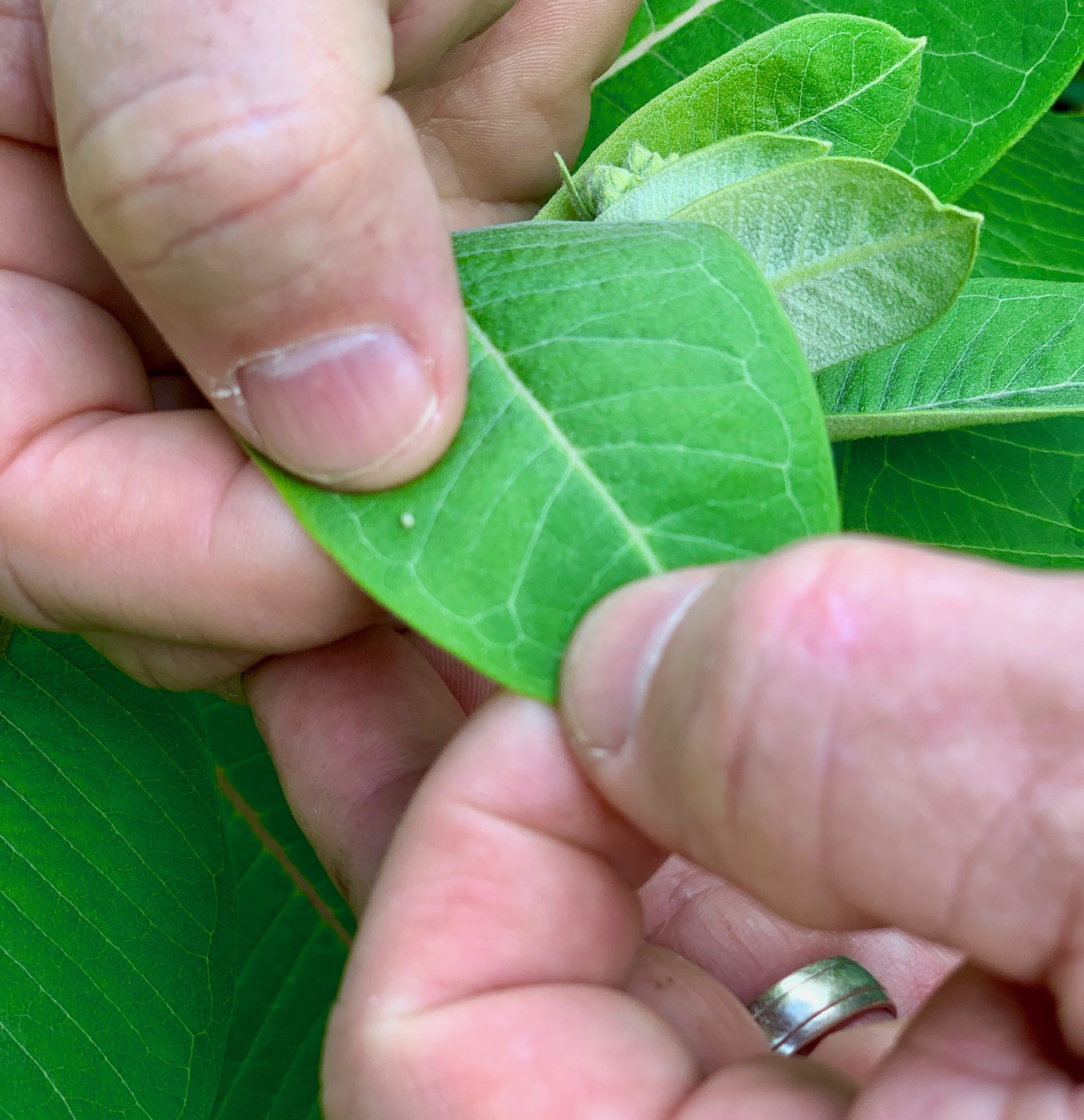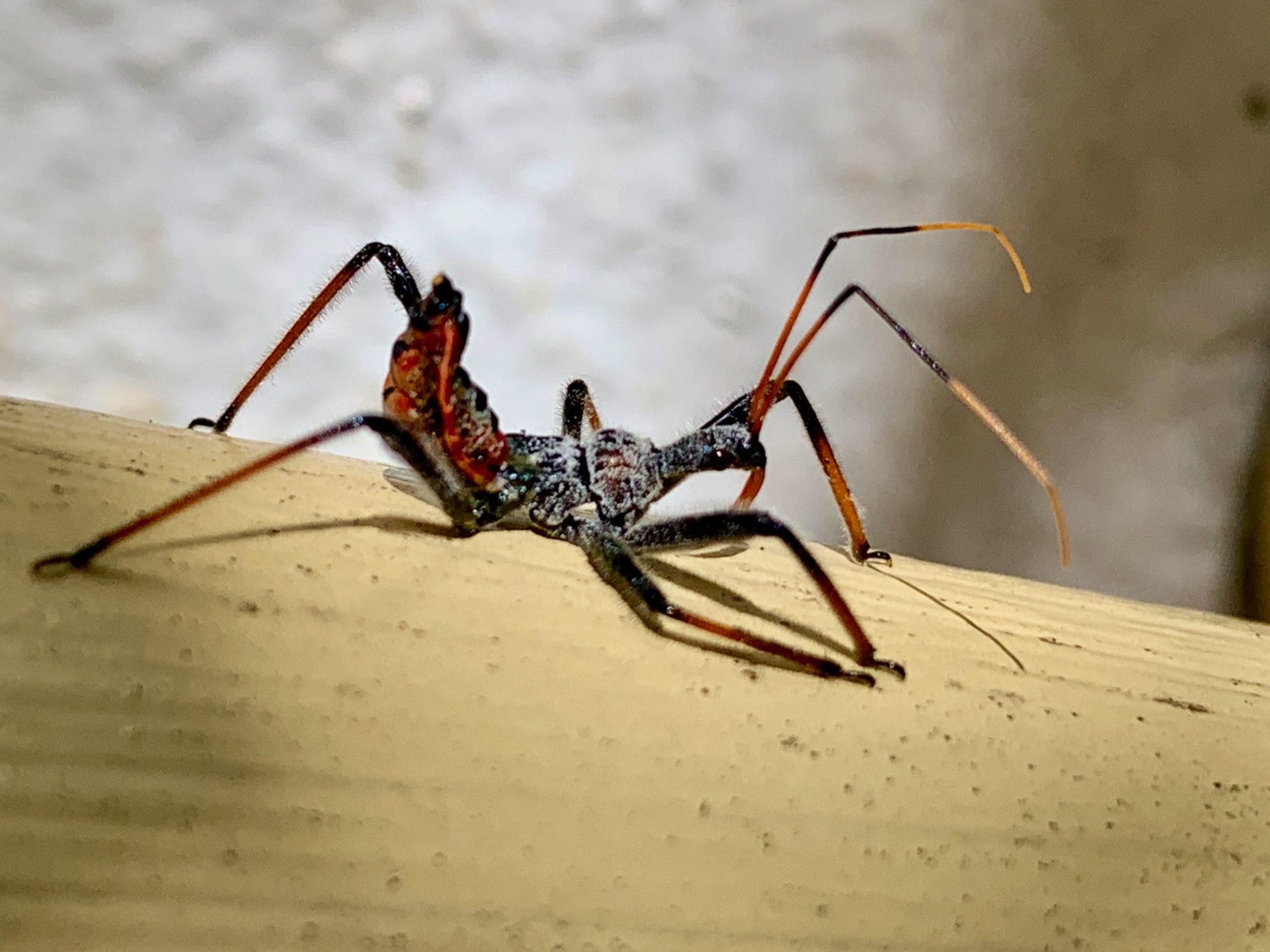Mary Reid Barrow
Happy Pollinator Week!
Once again, we take trees for granted. This time, it’s the all-important role they play in pollination that makes trees our unsung heroes.
When it comes to pollinators, our attention is usually focused on nearby, easy-to-see beauties, like this monarch butterfly egg on milkweed that Maurice Cullen found at the butterfly garden behind Virginia Beach Middle School:
Or maybe we are entranced as I was at the sight (featured photo) of a tiny black swallowtail butterfly caterpillar feeding on dill in my neighbor Jenny Johnson’s yard. With close ups of the pollinator world, like these, what’s going on up in the tree tops is hardly riveting.
But the activity up on high is really what makes the pollinator world go round. For example, the white oak is the host plant to over 500 different species of moths and butterflies. Not only do tree leaves provide food for pollinators’ growing caterpillars but many of the caterpillars provide food for 90 percent of the baby birds out there.
And the caterpillars provide food to us too. They grow up to be the butterflies and moths that flit about nectaring on our flowers and pollinating fruits and vegetables that we eat.
Tree leaves and bark also provide places for pollinators like wasps and other pollinating insects to lay their eggs. I saw a little assassin bug recently that would have been born from an egg mass that its mama laid on the side of a tree:

As a bonus, trees also are among the earliest plants to bloom providing nectar for insects very early in spring.
All that going on but you don’t see many clues! A little inch worm rode down on strand of silk the other day in front of my face and that told me he was feeding up in my sweetgum tree. I found a rolled-over leaf on a sassafras tree and I wondered if a critter was hiding in the leaf and dining on sassafras leaves at night.
Fortunately, though, the butterfly garden at the middle school, makes it easier for us to see both pollinators, eggs and caterpillars in one place–down low on flowers, in smaller trees, and in a woodland behind. Maurice founded the garden when he taught at VB Middle School, and though he now teaches life science at Princess Anne Middle School , he still oversees the garden, still weeds, plants and checks on all the activity. It’s right behind the school and a great place and to visit.
A for trees, Maurice pointed out the prickly ash that the giant swallowtail butterfly doesn’t find prickly at all and lays her eggs on the ash leaves. Cullen also grows pawpaw trees at the butterfly garden to attract the zebra swallowtail to lay her eggs on its greenery. The same goes for spice bush and sassafras trees in the garden and the natural woods with all sorts of host trees behind the garden.
Maurice gave me this short video about pollinator life. It shows you how to find a spicebush caterpillar in its sassafras leaf home. He prepared the video for the Butterfly Society of Virginia of which he also is president:
Spend some time this weekend, looking for pollinators and thank not only our old familiar host plants down low, but the trees on high too.
Do you have a favorite tree, a secret tree grove or neighborhood climbing tree that you love? Let me know your stories about trees, the critters who live in them and the insects that dine on them. Send an email to maryreid@lrnow.org